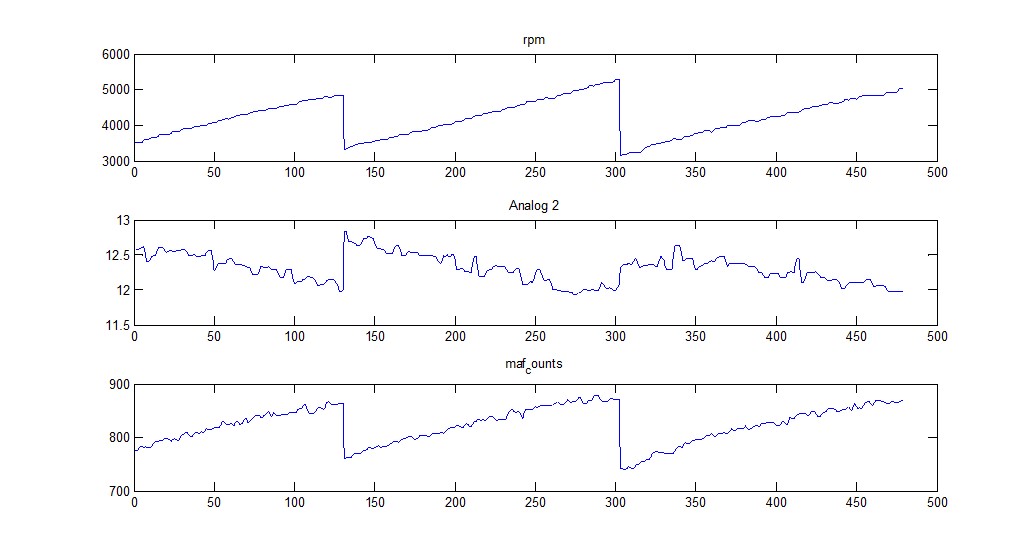-

Been a long while since any updates but development has been continuing heavily over in the Stangwerks. Back in the May time frame we spent a lot of time at the dyno over two separate sessions. What we were trying to do was get the MAF transfer function to precisely fuel the car over the entire RPM range and pick up gains from our new exhausts. With A/F close doesn’t cut it because we do see differences when we’re off by 0.2 A/F ratio, and obviously as the difference becomes greater the power variation is higher.
Here is a plot from logged data in pulls through a couple of gears. As you can see the A/F drops a few tenths of a point over the RPM band. As the mixture gets richer the power tends to drop off and we end up with holes in the power band.

Here’s a close up example of what I’m refering to, with an original and corrected power curve in a fairly narrow 800 RPM wide window. In this particular section of the curve, down in the 4k region, the original pull was deficient about four horsepower in this section. And, this wasn’t the only area of the curve affected as there were a few other areas that needed attention. When we can get the engine to run consistently at the target A/F of around 12.9 it is noticably sharper and pulls with more authority throughout the RPM band.

The way we fix it is by re-mapping the MAF transfer function and shifting the limited number of cells for the curve to the RPM range of interest. As develiered the Ford ECU has most of the resolution of the curve focused in the 0-2500 RPM range and have very few points above that RPM. Furthermore, the Ford ECU V has adaptive learning so it starts to correct these values in the trasnfer function so that the operable RPM range becomes extremely well behaved.However, our operation is entirely different. We are only interested in WOT and the adaptive learning doesn’t not function at WOT, and, we don’t care about low RPM operation. What we do is use more cells/points in the 3000-5500 RPM range, thus allowing higher resolution there and more accuracy for delivered fuel.

The ECU can still apply modifiers based on intake air temperature, coolant temperature, load, and a few other things that affect the ultimate fueling. And we’ve learned the hard way that these modifier tables themselves need doctoring because they can be too intrusive to the detriment of power, however, they can be completely shut off. Anyhow, the end result of the work was that we had two independent MAF transfer functions, one for each engine, that performed far better than what we had at the outset. At CMP and RA we had dead nuts accurate fueling that resulted in more horsepower area under the curve.
We still haven’t had time to get one of the cars down to the chassis tuning dyno but I hope we have time in September. Our new trilink in the rear is behaving wonderfully and we’d really like to see some hard numbers, measured instead of calculated, to go along with our efforts.
 Posting Permissions
Posting Permissions
- You may not post new threads
- You may not post replies
- You may not post attachments
- You may not edit your posts
-
Forum Rules









 Reply With Quote
Reply With Quote
Bookmarks